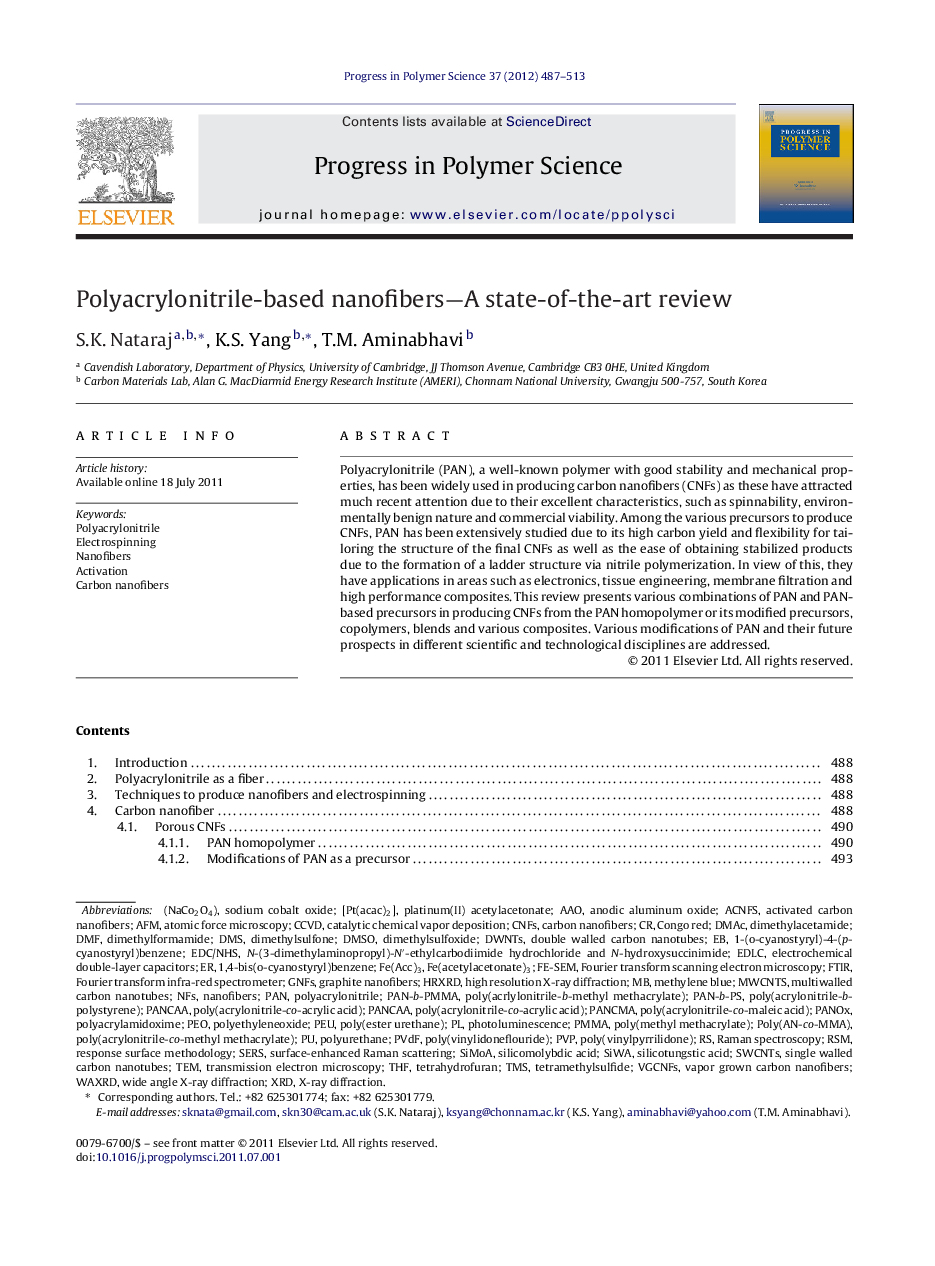| Article ID | Journal | Published Year | Pages | File Type |
|---|---|---|---|---|
| 5208456 | Progress in Polymer Science | 2012 | 27 Pages |
Abstract
Polyacrylonitrile (PAN), a well-known polymer with good stability and mechanical properties, has been widely used in producing carbon nanofibers (CNFs) as these have attracted much recent attention due to their excellent characteristics, such as spinnability, environmentally benign nature and commercial viability. Among the various precursors to produce CNFs, PAN has been extensively studied due to its high carbon yield and flexibility for tailoring the structure of the final CNFs as well as the ease of obtaining stabilized products due to the formation of a ladder structure via nitrile polymerization. In view of this, they have applications in areas such as electronics, tissue engineering, membrane filtration and high performance composites. This review presents various combinations of PAN and PAN-based precursors in producing CNFs from the PAN homopolymer or its modified precursors, copolymers, blends and various composites. Various modifications of PAN and their future prospects in different scientific and technological disciplines are addressed.
Keywords
AAODWNTsActivated carbon nanofibersGNFsEDLCHRXRDCCVDEDC/NHSCNFsDMACDMSAFMNFsDMFFE-SEMMWCNTsdimethylacetamideDMSOAnodic aluminum oxideSodium cobalt oxidedimethylsulfonedimethylformamideDimethylsulfoxideCatalytic chemical vapor depositionCongo redFTIRPANMethylene blueatomic force microscopyCarbon nanofibersNanofibersMultiwalled carbon nanotubesGraphite nanofibersDouble walled carbon nanotubesHigh resolution X-ray diffractionPolyacrylonitrile
Related Topics
Physical Sciences and Engineering
Chemistry
Organic Chemistry
Authors
S.K. Nataraj, K.S. Yang, T.M. Aminabhavi,
